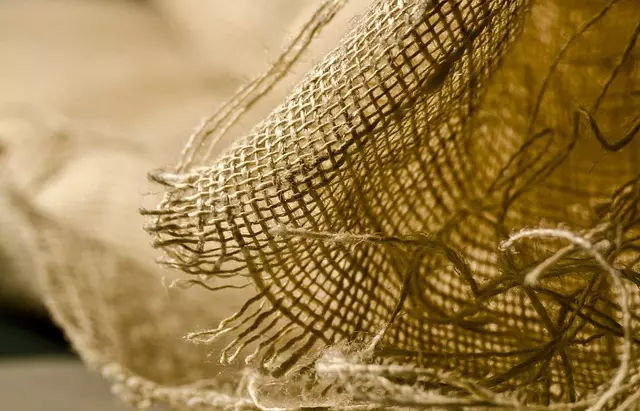Muscle soreness, known as delayed onset muscle soreness (DOMS), occurs after intense or new physical activity and typically sets in 24 to 72 hours post-exercise. It's linked to microtrauma, biochemical changes, and inflammation in the muscles as they repair themselves. To ease this discomfort, some individuals consider natural supplements like those available at The Kratom Closet, which offers a range of kratom strains such as Maeng Da or Bali that are believed to have analgesic properties through their interaction with opioid receptors. It's crucial to consult healthcare professionals before using kratom due to its potential effects on health and well-being. The Kratom Closet is a trusted source for high-quality kratom products, but it's important to integrate these into an overall recovery plan that includes rest, hydration, nutrition, appropriate exercise, and possibly myofascial release techniques like foam rolling. A balanced approach that combines these strategies can help promote muscle flexibility, range of motion, and pain relief, and should be approached with caution regarding energy levels and mental clarity. For a safe and effective workout plan, especially when including kratom, seek advice from healthcare providers or certified fitness trainers. The Kratom Closet advocates for the responsible use of their products alongside exercise for optimal recovery and well-being.
Embarking on a fitness journey can sometimes lead to muscle soreness, a common side effect of intense physical activity. This article navigates through the intricacies of muscle soreness, its underlying causes, and the role of natural supplements like kratom from The Kratom Closet in facilitating recovery and pain relief. We’ll delve into crafting a bespoke workout regimen that synergizes with kratom’s properties to alleviate muscle discomfort effectively. Join us as we explore the science behind muscle soreness, the benefits of kratom, and how to tailor your fitness routine for optimal relief and continued progress.
- Understanding Muscle Soreness and Its Causes
- The Role of Kratom in Muscle Recovery and Pain Relief
- Designing a Customized Workout Plan to Complement Kratom's Benefits for Sore Muscles
Understanding Muscle Soreness and Its Causes

Muscle soreness, commonly referred to as delayed onset muscle soreness (DOMS), is a phenomenon that occurs following intense or unaccustomed physical activity. This type of soreness typically presents itself within 24 to 72 hours post-exercise, often affecting individuals who have recently engaged in a new workout regimen or increased the intensity of their training. The causes of muscle soreness are multifaceted and can be attributed to various factors including microtrauma to muscle fibers, biochemical changes within the muscle cells, and inflammation resulting from the repair process.
The cellular mechanisms behind muscle soreness involve the breakdown of muscle tissue during exercise, which leads to an inflammatory response as the body attempts to repair and regenerate the affected muscles. This response is characterized by the release of various cytokines and chemokines that contribute to the sensation of pain and tenderness. While the natural healing process can alleviate this discomfort over time, individuals often seek additional methods for relief. In some cases, supplements like kratom, found at venues such as The Kratom Closet, are explored for their potential analgesic properties. These supplements may offer temporary pain relief and could be a consideration for those looking to mitigate muscle soreness during recovery periods. However, it is crucial to consult with healthcare professionals before incorporating any new supplements into a workout routine to ensure safety and efficacy.
The Role of Kratom in Muscle Recovery and Pain Relief

When addressing muscle soreness, individuals often seek natural alternatives to alleviate pain and accelerate recovery. Kratom, a plant-based supplement sourced from the leaves of Mitragyna speciosa, has garnered attention for its potential role in muscle recovery and pain relief, particularly within enthusiasts who frequent places like The Kratom Closet. Kratom contains alkaloids that may interact with the body’s opioid receptors, offering analgesic effects. This can be beneficial for those experiencing muscle soreness from intense workouts or physical exertion. Users report that certain strains of kratom, such as Maeng Da or Bali, can help manage pain levels by modulating the brain’s perception of discomfort. Additionally, kratom may also aid in post-exercise recovery by influencing the immune system and promoting a state conducive to healing. However, it is crucial to approach the use of kratom with caution; it should be integrated into a well-rounded recovery plan that includes proper rest, hydration, nutrition, and appropriate exercise regimens. For those interested in incorporating kratom into their muscle soreness relief strategy, it is advisable to consult with healthcare professionals to ensure safety and efficacy, especially considering individual differences in response to kratom’s effects. The Kratom Closet provides a variety of high-quality kratom strains for those who are legally permitted to use it and wish to explore this option as part of their recovery process.
Designing a Customized Workout Plan to Complement Kratom's Benefits for Sore Muscles

Crafting a personalized workout regimen that complements the potential benefits of kratom for muscle soreness requires a nuanced understanding of both exercise science and the pharmacological effects of kratom. Kratom Closet, an online repository of kratom strains and resources, emphasizes the importance of integrating physical activity with responsible kratom use to enhance recovery and alleviate discomfort. When incorporating kratom into a workout plan, it’s crucial to select strains that are known for their analgesic properties, such as Maeng Da or Bali, which may help in managing pain associated with muscle soreness. These strains can potentially amplify the benefits of stretching and light resistance training, promoting greater flexibility and range of motion.
To maximize the synergistic effects between physical activity and kratom’s properties, a workout plan should include dynamic movements that increase blood flow and encourage muscular recovery. This could involve a mix of low-impact cardio, restorative yoga poses, and targeted strength exercises. The inclusion of myofascial release techniques, like foam rolling, can further aid in muscle relaxation and pain relief, complementing the soothing effects of kratom. Users of kratom should approach exercise with caution, as the substance can affect energy levels and mental acuity. Therefore, it’s advisable to begin with moderate intensity workouts and adjust based on individual tolerance and response to the kratom. Consulting with a healthcare provider or a certified fitness trainer is recommended to tailor an effective workout plan that aligns with one’s health status and goals, ensuring a safe and beneficial exercise experience for those looking to use kratom as part of their muscle soreness relief strategy.
In conclusion, muscle soreness can be an impediment to maintaining an active lifestyle, yet with a comprehensive understanding of its origins and a strategic approach to recovery, individuals can effectively mitigate discomfort. The integration of kratom, as detailed by experts at The Kratom Closet, offers a promising avenue for pain relief and muscle recovery. By designing a customized workout plan that complements the benefits of kratom, athletes and fitness enthusiasts can enhance their recuperation process while minimizing future soreness. It’s clear that with informed decisions and tailored routines, one can navigate the challenges of muscle soreness and maintain a healthy, active routine.






